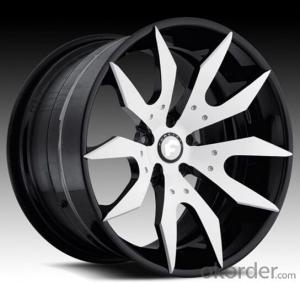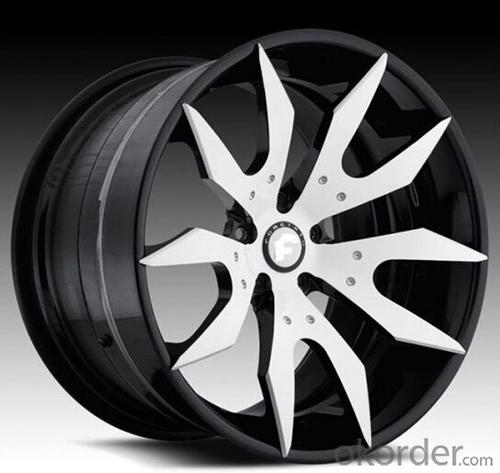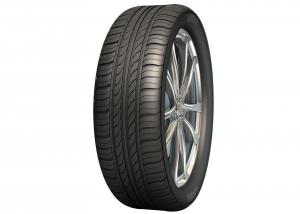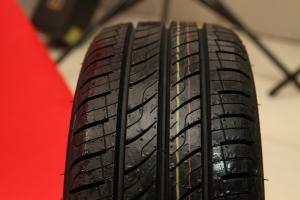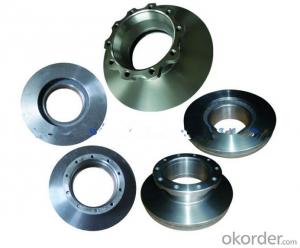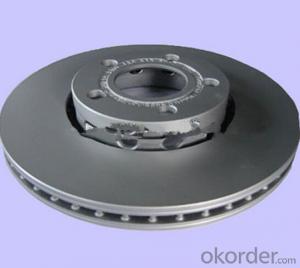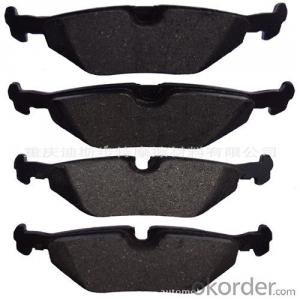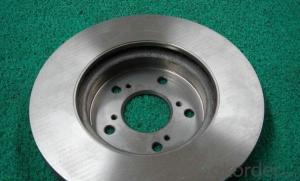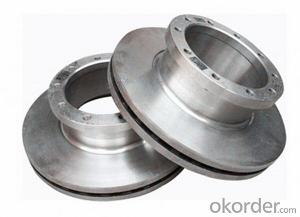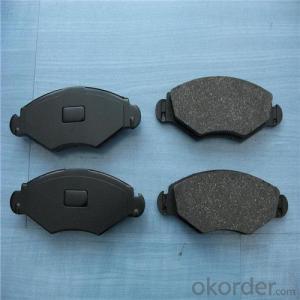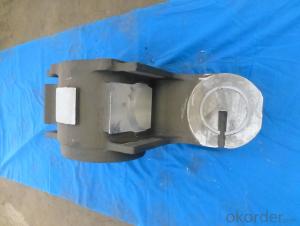Auto spare parts for chery S11 QQ brake disc (OEM:S11-3502030)
- Loading Port:
- Shanghai
- Payment Terms:
- TT OR LC
- Min Order Qty:
- 100 pc
- Supply Capability:
- 10000 pc/month
OKorder Service Pledge
OKorder Financial Service
You Might Also Like
Auto spare parts HT250 casting trailer and truck brake disc brake disc for truck trailer
1.Truck brake disc nodular graphite iron casting.
2.equipped with Disa sand process line.
3.With ISO9001:2000 and ISo/TS16949:2009 certificates
4.OEM Service/Design Service/Buyer Label.
5.OEM Quality Bearing Design( FIT / FORM / FUNCTION )
6.Wide Product Range(Customers' drawing or samples are accepted)
Auto spare parts iron casting HT250 truck brake disc brake disc
uto spare parts HT250 casting iron trailer and truck brake disc
OEM parts Good quality Competitive price
Excellent part supply system
ISO9001 and ISO/TS16949
auto spare parts Semi-metal ceramics brake disc customized high carbon brake disc wave brake disc
All kinds of aluminum casting: include automotive parts, railroad parts, medical parts, marine parts, lighting parts, pump body, valve parts, architectural parts and furniture parts so on
- Q: How fast can A.B.S. Depress the brake pedal?How fast can the average human pulse the brake pedal? -I‘d like both in how many times per second. Thank you
- your question makes no sense !! the ABS system does not go into effect til the driver presses the brake pedal hard enough to engage it ; the ABS does not engage itself
- Q: If a auto repair shop performed a brake system diagnosis. What are they doing?
- they check stuff like the condition of the rotors, make sure the calipers are working good and check the wear on the pads. if you have rear drum brakes they pull the drums and check the wheel cylinders for any leaks and condition of the hardware on the shoes and the shoes.
- Q: I have read I just need the protege 5 rear disc brakes but I know p5 have 5 bolts and my car use just 4 So do I have to change the bearing housing to 4 bolts on the rear p5 disc brake? help me :S please
- scrap booking is interesting and not that expensive
- Q: When does an anti-lock braking system start to work?
- As soon as you hit the brakes
- Q: I have a 98 VW Cabrio with which i drove in the snow for the first time today. I drove super slowly and a couple of times while i was slowly braking, the brake pedal would push up under my foot, in a sort of a loud vibration. My dad said that‘s what the ABS does for safety, but his car doesn‘t have ABS so I don‘t trust his opinion. The ABS light doesn‘t show up on the dash, but there is a light that sometimes is on the left of the sterling wheel.
- If u're sure u don't have it then it can be that the brakes need alligning,one is getting hoter than the rest or simply said it can be the brake hydaulic system has some flaws.But this is more possible with ABS and the louder when some pads are not working in synch with the rest.
- Q: help pls mechanical question?
- They use the same braking system as other cars on the road. But the older cars like 1870 threw 1935 used a cable and rod drum system. That is why alot of hot rodder like my self change over to a newer system.
- Q: brake system doesn‘t leak but I hear a noise coming from back wheel there s no pressure on the pedal when brakes applied takes a while to stopWhat could the problem be? Help!!
- Might be the brake master cylinder easy way to check is to stomp on the brake as hard and fast as you can(car not moving). If it holds even for a second then its a bad master cylinder. Also pump the brake many times slowly (car not moving) so the pedal goes to the floor and then look at the back side of the tires down low and look for fluid. Even tho you think the fluid is not leaking it can be.
- Q: I have a ‘94 honda prelude, recently the ABS brake light is on. can i fix or do i have 2 bring it 2 the dealer. If i can do it (DIY), where is the ABS system located in the car?
- first of all what style of vehicle is it? Th maximum ordinary reason for untimely ABS aplication is a fault in between the wheel sensors. ABS reluctor ring cracking is likewise an uncomplicated fault. The reluctor ring is placed on each and every wheel and is a hoop with tooth in it. you ought to take it to a qualified mechanic to have the equipment clinically determined properly. Guessing will value so plenty greater suitable than paying somebody to grant you the final prognosis.
- Q: the brake system has abs,every time I press the brakes they go to the floor.I have tryed bleeding them and it is still having problems.
- start with the furthist wheel brake from the master cyelinder and work your way closer as you go most of the time its the passager rear then the drivers rear then the passager front and then the drivers front and if you dont get any air after bleeding your brakes thay should be bleed and you should have good pedle if every thing is working the way its saposto good luck
- Q: put in abs system now when brake, makes heavy thump sound?
- The abs system works like pumping the brakes to keep wheels from sliding. Perhaps you didn't bleed the air out of the system well enough. Some part of the system may not be isolated from the car to dampen the pulsations.
Send your message to us
Auto spare parts for chery S11 QQ brake disc (OEM:S11-3502030)
- Loading Port:
- Shanghai
- Payment Terms:
- TT OR LC
- Min Order Qty:
- 100 pc
- Supply Capability:
- 10000 pc/month
OKorder Service Pledge
OKorder Financial Service
Similar products
Hot products
Hot Searches
Related keywords
